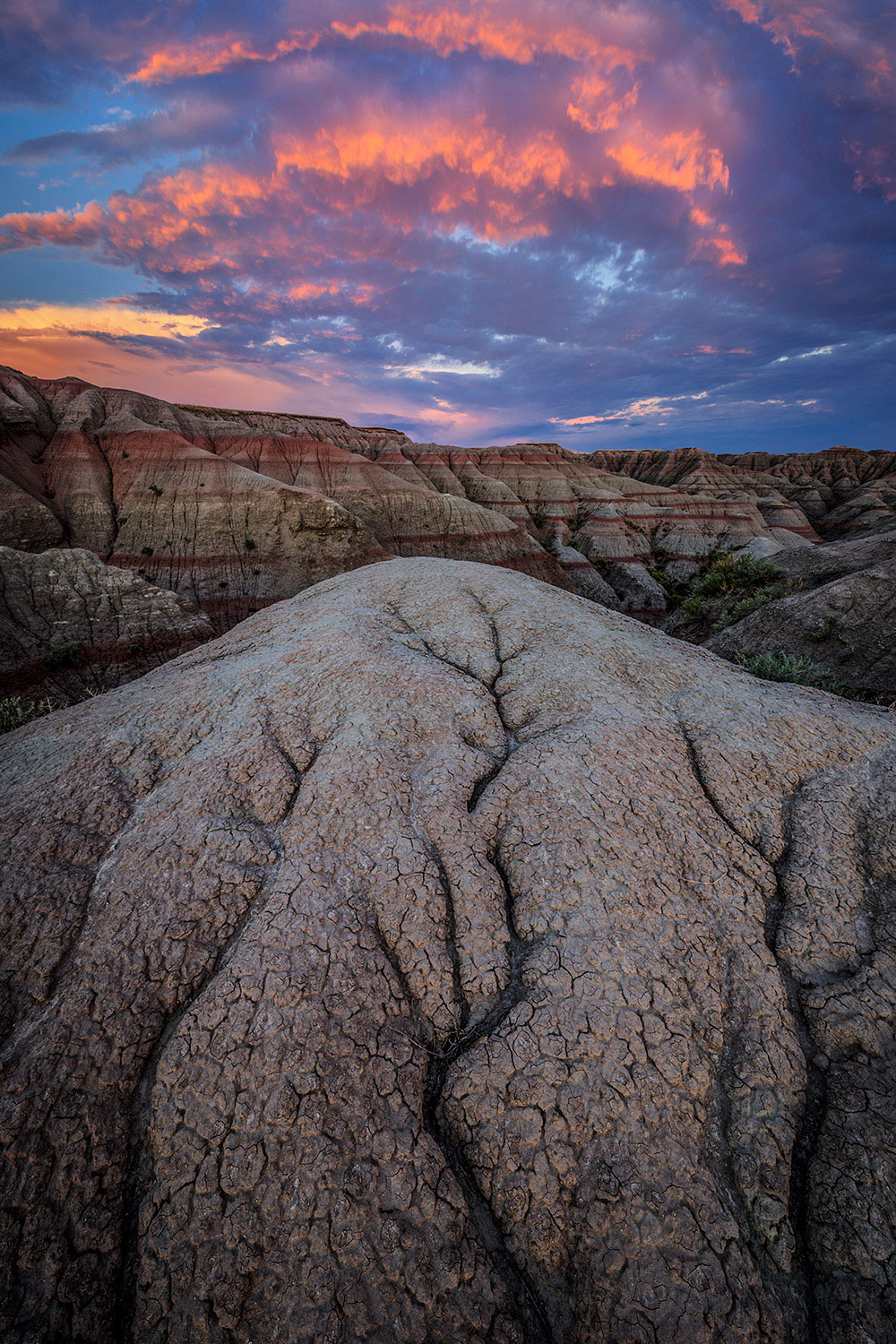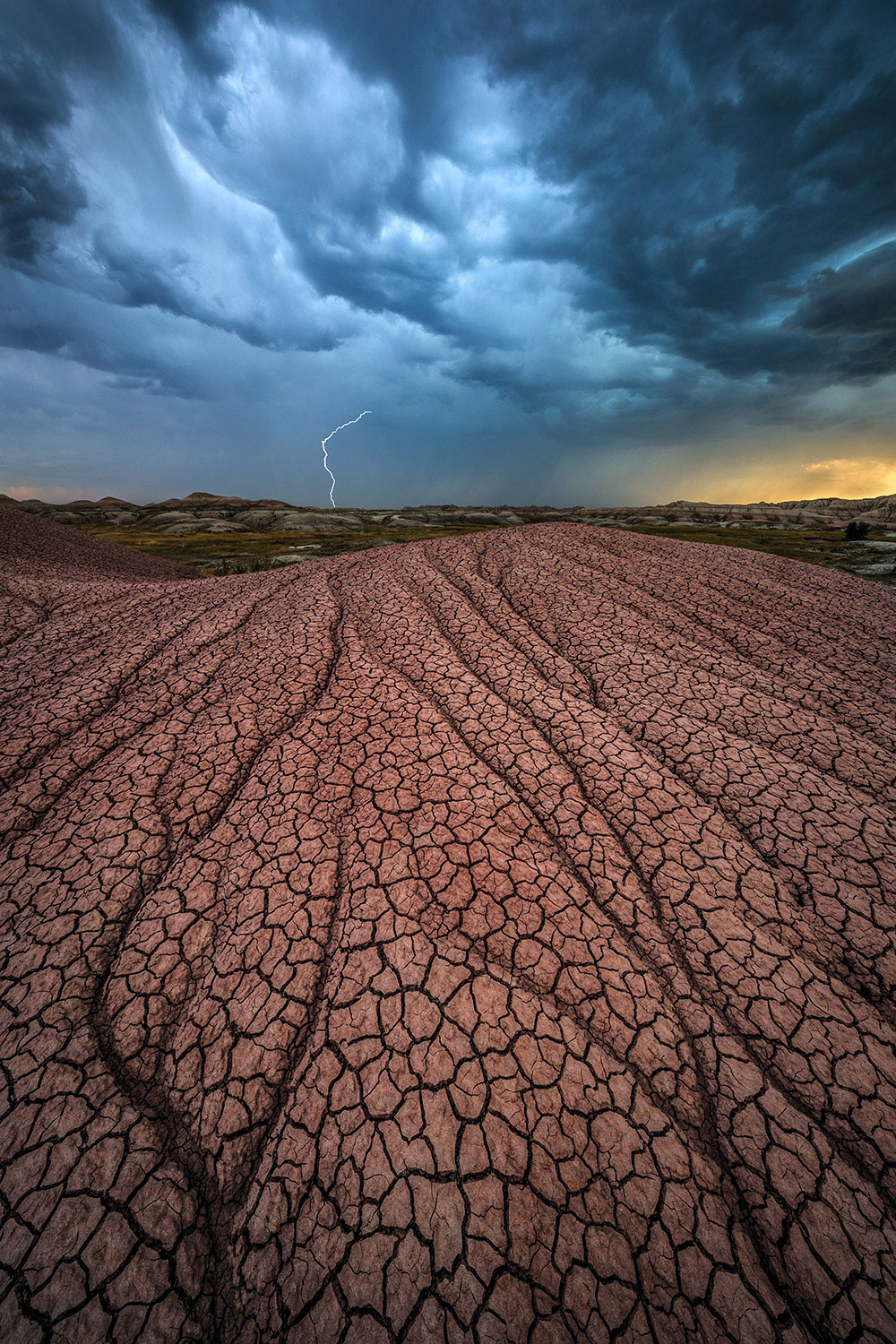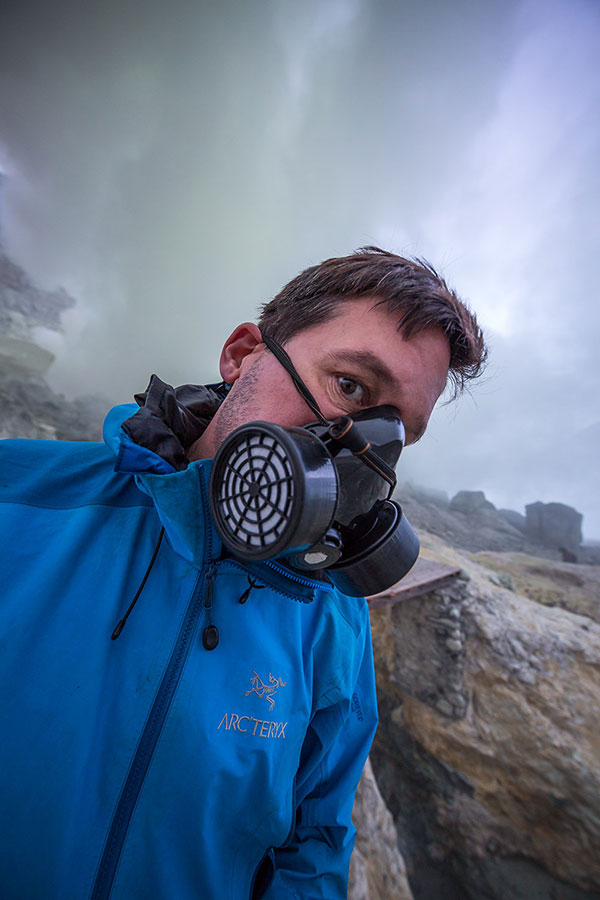Rising from the monotonous and seemingly endless grasslands of the Great Plains, Badlands National Park in South Dakota contains sharply eroded formations carved out of multi-colored sedimentary rock layers. Water has left its mark on the soft clay, resulting in miles upon miles of rock spires, deep canyons, and beautiful cracked mud. This fractured landscape is a photographer’s paradise, if one takes the time to carefully explore and find engaging compositions.
The landscape of the Badlands is stunning, but there are few obviously compelling landmarks, which means that you have to work extra hard to find good photo opportunities. Personally, I find the cracked mud and erosion patterns carved in the rock formations to be the most interesting visual features of the Badlands, so I’m often looking for wide-angle compositions that use those features as foreground elements. For the photo below, I opted for an ultra-wide perspective in order to simultaneously capture the erosion patterns in the foreground along with the colorful sunset clouds.
Related eBook: The Grand Landscape
I love the Badlands during stormy weather. For this next image, when I saw storms approaching, I set up at a location I had scouted earlier. In order to capture shots with lightning in them, I needed to lengthen my exposure time, so I stopped down to f/22 and reduced my ISO to its lowest setting. I then fired off a series of 1.6 second exposures, one after another, in the hopes that I would get a few exposures that would record lightning bolts. Although I saw many lightning strikes with my eyes, only the brightest strokes were recorded by the camera sensor, so I ended up with only one usable photograph. But then again, one was all I needed! When it started to rain, I packed up and dashed back to my car to wait out the worst of the storm.
Related article: 6 Tips for Bad Weather Photography
Exploration and scouting are always critical to successful landscape photography, and this is especially true in the Badlands. I spent hours every morning and evening wandering the landscape, looking for interesting background scenery to juxtapose with compelling foreground features. When I found an area that seemed promising, I took out my camera and got to work, exploring potential compositions for when the light was best. But no matter how much you plan, sometimes you have to throw everything out the window and react to what the scene gives you. Such was the case when I made the image below: the sunset clouds were in the wrong place in the sky to work with my chosen compositions, so I had to act quickly and find a composition that would work with the clouds before their color faded. Luckily, I was able to find this compelling v-shaped white streak in the rock, which created leading lines pushing deeper into the scene. I then waited for the moment when the color was at its peak intensity.
Related article: Choosing a Digital Camera for Landscape Photography
The Badlands are an amazing place, and I can’t wait to go back there again sometime soon. It is the kind of place you can explore and photograph for months, and still always come up with something new and exciting.
About the author: World-renowned professional photographer and Tamron Image Master Ian Plant is a frequent contributor to several leading photo magazines and the author of numerous books and instructional videos. You can see more of Ian’s work at www.ianplant.com.
Have something to add to the story? Leave a comment or email editor@outdoorphotographyguide.com.





Beautiful shots Ian, enjoyed seeing SD through your lens and reading your comments on each photo. SD was a neighbor in my early yrs. but never been there, must make it a destination now. Really nice profile picture too!
Thanks for sharing, I loved the last image, you can stay long time looking at it and not getting bored.
Dear Ian, Your compositions and photography of the Badlands are truly amazing. The photo of the v formation in the rock in the foreground leading the eye down the valley to the incredible cloud formation in the background is one of my favorite photos you have taken while in the Badlands. I'm beginning to understand how to intelligently use the wide angle lens when I view your photography. I recently have purchased a Tamron 10-24 wide angle lens and plan using it to explore in depth the greater possibilities of shooting with the camera tilted vertically while on the tripod. This makes the photographs much more interesting.Thank you for sharing your knowledge of photography with all of us non professionals. Sincerely, Don Meyer
I really love your use of shapes to draw the eye to the scene and of course your great understanding of color . My using a different perspective other than straight on, your photos are very strong. Love your work.
I just came back from there myself recently...Really interesting and beautiful place, but only had 1 day to shoot any photos, so did the best I could in a short trail hike, and I loved it. Is this back country that you're in or a hike in the cedar pass area? I don't wanna know exact areas, just wondering about your process in finding areas to shoot. Do you tend to do more hiking to get unique shots or what? Glad you had great weather it seems, thanks for sharing some great photographs.